Happy Ears & Pipeline Bloat
Happy ears is an insidious contamination that runs rampant in many sales organizations and causes a fatal revenue disease called pipeline bloat.
Pipeline bloat gives the sense that you have a future revenue stream that will meet your goals and expectations but often disappoints when it counts… at the end of the month, quarter and year.
How do you know when your team has been contaminated and you have a full-blown plague on your hand?
Typically, your team is relying on what they think and what your prospects / customers are saying… not on what they are doing. There is one rule you must always apply, “it is not what the prospect / customer says, it is what they do.” Salespeople tend to become emotionally involved in their sales cycles.
They want their deals to close so they can earn a commission, not have to do the hard work of prospecting, and imagine a future state of bliss. Unfortunately, too many salespeople live in a dream world of hope versus knowing (based on evidence) that an opportunity will close.
The larger and longer the sales cycle, the deadlier this can be to the salesperson and the company’s future health. This is both a sales strategy and process problem along with a leadership problem. Don’t be too hard on yourself or your team… this is a very common dilemma.
The good news is that it’s very fixable and can literally double your sales results when addressed properly! Remember this truth, “managing a sale cycle is all about getting to the truth, as early as possible.”
Being Shrewd & Innocent
A well-defined and executed sales strategy with a process is essential to having a truly “Killer Sales Organization” that produces a rock-solid pipeline. An accounting department uses GAAP (an accounting strategy / process) and has been trained in its application.
An IT department has been trained and uses strategy and processes in similar ways depending upon on their technology platform and the applications they deploy.
This is the reason that they can always get results, resolve the difficult problems, and scale their organization to whatever is required to reach a defined goal.
Given that your sales and marketing department is your single source to revenue achievement, ask yourself if they are being trained, coached and mentored in an effective sales strategy and process. Without it, chances are you will be challenged to reach any increasingly defined revenue goal.
Sales strategy and process begins with being both shrewd and innocent. Shrewd means you know what is happening (during an interaction with a prospect, not after), how it will positively or negatively influence the future outcome of the opportunity, and how to respond to either leverage the positive or change the potential negative to affect a future positive outcome.
Using a simple example… when a prospect asks for a quote, proposal or RFP this can mean several things. It could be a way to get your information, to compare and negotiate with your competition, whom they have already chosen to do business.
Since most customers and prospects don’t like to say no, they often ask for information (brochure, proposal or quote) and then disappear. However, and fortunately, sometimes it does mean they are ready to buy.
The question is, do your salespeople know which of these are happening to them and what to do when it does? This, among many other sales pitfalls, are happening to your sales team every day.
What’s important is that these pitfalls don’t continue to go undetected and opportunities with little or no merit continue to end up in your pipeline. The key is to spot these pitfalls immediately and take corrective action. If not, you will be wasting very expensive company resources and give everyone a false sense of the future.
A salesperson’s biggest problem is they act like a salesperson talking about their product, focusing on their agenda, not understanding the prospect’s goals and therefore are treated like a salesperson.
How do you treat salespeople? Probably like me, give them little to no evidence you have a problem, try to get the information you need as quickly as possible, and then get rid of them fast. This is where innocence comes in, your people need to be innocent, i.e., trusted from the very start.
This all starts with breaking down that mental script we all have and use to manage salespeople, because we don’t trust them (many times for good reasons).
Most salespeople don’t even know this is going on, how they are actually causing it, or what to do about it when it is happening to them! To have opportunities in the pipeline that are solid and well-sponsored from our customers and prospects, we tell our salespeople to go out and listen well.
The problem is our salespeople don’t have a strategy with a repeatable process that gets the prospect to lower their guard and then motivates them to talk so we can listen well and get to the truth.
Is it any wonder that we have bloat in our pipelines? Being both shrewd and innocent during each phase of a sales cycle is foundational to being the dominant market player in your space.
Pipeline Velocity
The single most important metric to a healthy, vibrant, and growing pipeline. Pipeline velocity defined, is the quality and quantity of new opportunities coming into the pipeline in any given period (usually month or quarter) to reach a revenue goal.
A salesperson’s first job must be to bring in the right pipeline velocity (quality and quantity) of new opportunities to exceed goal. In absence of this, they WILL NOT be successful.
Let’s start by defining quality. My generic definition of a Stage 1 pipeline opportunity is, an opportunity engagement at the decision maker level, where there is a problem that has a meaningful consequence (that your solution can fix), which needs to be resolved within “x” period.
If you are selling $1,000,000 software and not speaking to the person who is responsible for solving it, your win probability is unlikely (unless you’re selling pencils). Hold your salespeople accountable to getting to the decision maker, but make sure they have a solid strategy and process to do so first.
Next, a meaningful consequence is generally defined as 3x value of the problem. Therefore, if you have an average deal size of $100,000, then the problem should be worth $300,000 to get fixed.
The key here is not just finding out what the problem is, it is understanding WHY the problem is worth $300,000 to fix, and what are the consequences if not addressed. Ultimately, this is what will drive every sale cycle to close and without it there is little hope for success.
Learning how to find and qualify this type of prospect is the first most critical step in any sales process. If your sales playbook does not have a clear path to accomplishing this, it’s important you get one as quickly as possible! The final Stage 1 qualifier is timing – when will it close.
You don’t want extended close date opportunities in the pipeline for two reasons. First, a long close date means there is a strong probability of no compelling and meaningful reason to solve the problem that will drive the opportunity to close, and second, long future close dates will bloat the value of your pipeline.
Lastly, the quantity… based on the quality above, it is reasonable to give a close probability of this Stage 1 opportunity of 25%.
Assume we have an average Stage 1 opportunity size of $10,000 and we have a quarterly goal of $50,000. $50,000 ÷ $10,000 = 5 Stage 1 opportunities needed to close $50,000 of business each quarter. Since the Stage 1 opportunity probability is 25%, we need 5 (Stage 1 opportunities) ÷ 25% = 20 (Stage 1 opportunities) coming into the pipeline per quarter, since only one in 4 will close.
We now can determine the required Stage 1 opportunity pipeline velocity needed per week and month to be successful. As an example, if the per quarter Stage 1 opportunity requirement is 20 then divided by 12 weeks in a quarter equals 1.66 (rounded up = 2).
I now know I need each of my team members to deliver two Stage 1 opportunities per week that meet the quality definition above, to be successful. All I need now is an aligned and repeatable lead generation and sales strategy with a process to make sure I am consistently accomplishing the goal.
Pipeline Review Basics – Keeping the pipeline clean and accurate is an ongoing required discipline to keep your team held to the right standards and your revenue streams on track. To keep it simple there are six data points to a meaningful opportunity review, they include:
- Age of the Opportunity;
- Decision Maker Name and Role;
- Stage of the Opportunity,
- Articulated Pain;
- Next Step (with dates for its accomplishment);
- Close Date: and finally
- Weighted Pipeline Value.
Age of the opportunity – generally I would not allow an opportunity to stay in the pipeline that was over 1.5 times the length of an average sale cycle. Slow moving sales cycles that linger in the pipeline usually do not have adequate sponsorship or business consequences to move it along to close.
There is a high chance that your salesperson has happy ears and is relying on a strategy of hope (which does not close deals). For a strategy to follow on determining which of these languishing opportunities are real and which are not, read my article here “Sales Revenue Tail Spin, Read Quickly Before You Have To Jump.”
Decision Maker Name & Role – it can be difficult to get to a decision maker. However, once there and after a good discovery session on business strategy, along with how your solution can resolve it, the sale is yours to lose. If you are one level below and your competition is at the decision maker level, you’ve lost already.
A quality opportunity has all the key stakeholders involved and an understanding of their individual pain points (AKA problems that have consequences). If you are getting excuses from your sales team that they can’t get to that level, it’s because they don’t know how and they need help.
Stage of the Opportunity – We’ve defined (Stage 1) by addressing its quality and quantity components. There are 3 other stages equally as important and key to pipeline management.
These are, (Stage 2) Resource & Money Requirements – 50% probability, (Stage 3) Decision Making Process with go / no go steps – 75% probability, and finally (Stage 4) Close-ability 90% probability. Each stage has unique quality and quantity definitions that align with a repeatable sales strategy and process for its accomplishment.
Articulated Pain – A problem with a consequence equals pain. As stated previously, the key is not just finding out what the problem is, it is understanding WHY the problem is worth X amount to fix, and what are the consequences if not addressed.
Often, I find inadequate pain statements in the opportunity pipeline like, he wants a new machine because he does not like the way the old one works, or she is tired of hearing complaints about how hard the software is to use.
A salesperson with pain statements like this in the pipeline is an indicator of someone who has not had the right coaching and training to ask the right questions. Unfortunately, companies don’t spend good money to fix these kinds of problems.
I’m not saying the company does not have real pain, what I am saying is the salesperson does not know what the real drivers are.
Therefore, we cannot accurately judge the opportunity. Further, how could the salesperson be considered a trusted advisor to their prospect if they do not understand the business issues at this level?
Companies spend money to solve liability issues, or quality control challenges that are losing customers and keeping the company from growth.
Make sure your team gets to the heart of the matter. It will make them trusted advisors with your prospects, place them head & shoulders above their competition, and provide the influence needed to control the sales cycles until the check for the order clears the bank.
Next Step – A sales cycle is not a sales cycle unless it has a clearly defined and agreed to meaningful next step towards closing the opportunity between the customer and the salesperson. Sale cycles are not one sided, both parties must be involved.
Remember, it’s not what the prospect says, it is what they do. If your salesperson is doing all the work and your prospect is doing little to none, don’t fool yourself, you have an opportunity with little to no merit.
Make sure each opportunity has a current next step (that the prospect must complete) with dates that are being met. Whatever is not growing forward is shrinking backward!
Close Date – What is the projected close date? Because all the details driving an opportunity are not known, early in the sales cycle the close date is an estimate and should be conservative. By the end of stage 2 the close date should be mutually agreed upon by the buyer and seller.
Most importantly, an understanding of what the customers internal drivers are that make this date vital should be clearly articulated. The close date should never be an arbitrary date. Ask yourself the question… is the driver for this close date important enough to keep the opportunity on track? If not, don’t be surprised if the opportunity keeps getting pushed out.
Often projected close dates are driven by the wrong reasons, e.g. the salesperson’s desire for the deal to close so they can make their quarter or year.
A strong opportunity has the customers reasons driving the close date, not the salespersons. In absence of this, you will find your salespeople will resort to creating drivers like discounting, begging and chasing your prospects… not a solid strategy to achieve company goals.
Weighted Pipeline Value (WPV) – Assuming the opportunities in the pipeline meet the criteria for each stage, WPV is a simple formula that will tell you the future real total value of your revenue pipeline, e.g. take all your opportunities with a close date of this quarter × the probability amount of each opportunity = your quarterly revenue forecast.







